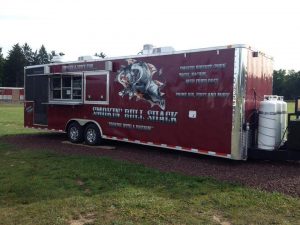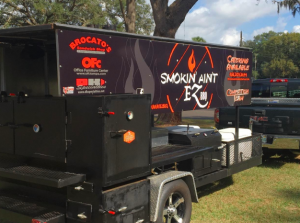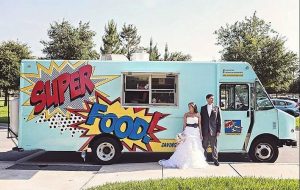Slotting fee? Food broker? LTL?
For many entrepreneurs, starting a food business means having to learn new vocabulary. Sure, you know what a spreadsheet is, what your price is, and what the post office is, but what about the terms specific to the food industry?
Below, you’ll find 25 terms to better acquaint yourself with the food industry. Some I’ve stumbled over the years – and others are essential to your success.
Let’s get started!
Financial Terms
COGS: This stands for “Cost of Goods Sold.” In other words, it’s your product cost — the cost of the product if you were to simply hold a jar in your hand. This includes ingredients, packaging and labor.
GPM: This stands for “Gross Profit Margin” — the amount of money you have left over after you subtract your COGS from your sales numbers. Here’s an example:
In June, you sold 1,000 jars for $6,789. The 1,000 units cost you $1.36/unit.
Sales: $6,789
COGS: $1,360 ($1.36 x 1,000)
GPM: $5,429 ($6,789 – $1,360)
There are two ways to make your business more profitable: increase sales and decrease costs. When you reduce your costs, you increase your GPM. This gives you more money to cover your operational expenses like rent, utilities, trade shows, etc.
NPM: This is your “Net Profit Margin” – the money you make after you subtract your expenses from your GPM. For many of you, this is the money you can put in the bank or reinvest back into your business. I like to use a farmer’s market as an example because many farmer’s market vendors skip this crucial step.
Normally, it’s “Wahoo! I put some money in the bank” — when it should be “How much money did I actually make?”.
In this example, we’ll say you sold 125 units for $800. Each unit costs you $1.58 to make.
Sales: $800
COGS: $197.50
GPM: $602.50
Then, you need to subtract all of your expenses for the farmer’s market:
Vendor Fee: $30
Gas: $5
Labor: $80
Samples: $16
Total Expenses: $131
GPM: $602.50
Expenses: $131
NPM: $471.50
So, this shows you that even though you sold $800 at the farmer’s market, your net profit margin (NPM) after all of your expenses are taken out is $471.50 — 58.9% of what you took home.
Channel Margin: The food business is run on margins – not markup. The healthier your margin, the more likely your food business is going to survive – simply because you have more money left over at the end of the day. As a general rule of thumb, the close you get your customer, the better your margin. That’s because you can sell your $1.68 jam for $8 to the consumer – versus $2.50 to a distributor. Let’s look at that percentage wise:
Sell for $2.50: That’s a 32.8% margin.
Sell for $8.00: That’s a 79% margin.
This is why farmer’s markets (while every weekend) are incredibly profitable for food producers. At the same time, your distributor moves more units. So, while the channel margin is lower, you tend to make your money up in volume.
Margin is crucial to the success of your food business. I’d argue it’s the most important vocabulary word on this list.
ROI: This stands for Return on Investment. It’s the amount of time or money you need to make back to make your investment worthwhile. For example, you can look at return on investment if you purchase a piece of manufacturing equipment, spend money on a fair or festival, or pay Facebook to advertise your business.
Let’s explore buying a piece of equipment:
Purchase price: $5,000
Result: Cuts your labor in half.
Old Labor Rate: $250
New Labor Rate: $125
Savings: $125/production
If you produce 5 days a week, you save $625/week. This means your return on investment occurs in 8 weeks. If you’re thinking about buying a piece a equipment, a two month return on that equipment is fantastic.
Payment Terms: You agree to terms with vendors, suppliers, retailers and brokers. These are the “rules” for paying someone – or someone paying you. It’s best to be on terms with your suppliers because you can manage your cash much better. But, you’ll also be on terms when you sell product to retailers.
They typically request Net 30 terms. That means they pay you within 30 days. If you’re lucky, you’ll have them pay with credit card up-front or on receipt of your shipment. If you write 2%/10 on your invoices, this means you’re providing a 2% discount if they pay within 10 days.
Inevitably, you’re going to have late payments – especially from cash-strapped distributors. These terms then become Net 45 or Net 60 — and you find yourself trying to play the “PAY ME” game. Be prepared for this and willing to negotiate better terms up-front.
Food Manufacturing Terms

Built by M&R Specialty Trailers and Trucks.
Co-packer: When you have a food product to bring to market, there are two options: make it yourself or have someone make it for you. When you have someone make it for you, they’re called a co-packer – or contract packer. These people are paid by the unit, hour, or day to make your product.
Food Broker: When you’re a pro at making your product – or you need some help in the sales department because you’re unable to get access to certain accounts, you’d hire a food broker. Food brokers are the networkers of the specialty food trade.
They know everyone – and focus on certain distribution areas and channels. For example, you can find brokers who service convenience stores in New England or Restaurants west of the Mississippi. Brokers take 5-8% of your sales price and sometimes a monthly fee.
Distributor: These are companies you hire to deliver your product to stores – locally, regionally, and nationally. They tend to take a 20-30% margin for the service, too. When you notice the majority of your time is spent driving all over the place, maybe it’s time for a distributor. You can ask your grocery store buyers for the best recommendation. Then, hand-over some of your accounts and you’re good to go.
Scheduled Process: This is the all-knowing document that you can hand to copacker to produce or just know that you’re producing a food product that’s safe for public consumption. Many scheduled process authorities are located at colleges and universities. Each recipe you want to bring to market will run between $100 and $200. Make sure you get a scheduled process before your product arrives on the shelf.
Shipping Terms

BBQ trailer built by M&R Specialty Trailers and Trucks.
LTL: When you’re approached by a buyer to ship pallets of product, you’re going to want to know your shipping terms. The most common is LTL – or Less Than Truckload. It means you need to ship product through a freight carrier but your shipment is not a full-truckload. The freight broker or company you use needs to know this.
TI-HI: This refers to the number of boxes/cartons stored on a layer, or tier, (the TI) and the number of layers high that these will be stacked on the pallet (the HI). This is useful information for distributors and mass-market retailers to know so they can coordinate shipping and space in their warehouses. To get a good idea of what your TI-HI is, you’re best off building a pallet.
Case Cube: Case cube refers to the space one case takes up. To calculate it, you multiply the length, width, and height of your case box together. Divide that number by 1,728 if you measured in inches. This number results in your ft cubed result. Or, if you hate multiplication, you can use a calculator.
Master Case: If you pack a couple cases of product within a larger case, you have a master case. This master case usually has it’s own UPC if you pack the master case the same way every time. If you simply place cases on a pallet, you do not have a master case and can skip this information on distributors new vendors forms.
Lift gate: If you don’t have a loading dock, you need your delivery truck to come with a lift gate, a metal elevator attached to the back of box trucks. It’ll cost you a little more to add a lift gate, but then you don’t have to disassemble and reassemble the pallet on the box truck. #nightmare This is also one of the main reasons you want to look for a loading dock at your manufacturing space.
Sales & Marketing Terms

Built by M&R Specialty Trailers and Trucks
Slotting Fee: Big retailers often mean big money…in the form of slotting fees. Slotting fees are when the buyers request you pay for space on their shelves. This either comes in the form of free product (aka free fill) or cash. For example, one retailer I worked with in the past asked for one free case of product, per sku, per store. At my cost, it would have cost over $3,000 to generate an order. While I passed on the retailer, I now know that it costs money to play with the big boys.
Sell Sheet: This is your food business’ billboard. It’s a must-have for any meeting with a retailer. And if you’re having trouble making one.
Off-Invoice Promotion: Want to run a promotion with your favorite retailer? Chances are, it’s going to be an off-invoice promotion. That means you simply slash your distributor and wholesale prices. How much? As much as you want. Work with your buyer to hit a target price that moves product. I’ve found $0.40 works – but $1.00 is best. I mean, it’s a proven fact. People buy more of an inexpensive product.
Scan-Down Promotion: This is where you coordinate a sale with your buyer for a week or a month and put the regular price on your invoice.
Then, after your promotion is done, you pay a per unit discount for every unit that sold during your sale period. For example, if you pay $0.50 for a scan-down and sold 100 units, you’d send your retailer a check for $50. I usually do scan-downs because then I only pay for what sold – versus off-invoice where retailers purchase as much product as they can because it’s discounted.
Facing: This is the amount of skus you have on the shelf that “face” the customer. For example, you could have four flavors with two rows of each flavor. That equals 8 facings. The more facings you have, the better. You have more command of shelf space and customers notice your brand.
Guaranteed Sale/Buy-Back: When you make a fresh product with a shelf-life of under 2 weeks, you’re likely only to get shelf space if you guarantee your product is going to sell. If it doesn’t, you buy it back at the retailer’s cost.
This happened to me when I owned an energy bar company from 2006-2010. I’d sell 24 bars to a store and buy 12 of them back, only making a sale on 12 units. That means you should work this “buy-back” policy into your pricing so you don’t go broke. I remember getting a check for $2.70. And….then I got rid of my energy bar company.
Spoilage Allowance: This is an allowance you give to distributors if you have a shorter shelf life (generally, under a year). This is 2-3% off your invoice total. It says you’ll account for product spoiling or going bad. And you pay to take it back or dispose of it (most of the time).
There’s a ton of vocabulary for you. It’s a good thing you’re not taking a test. If you have vocabulary to add to this list or you would like to know what a word means, please add your comment below. I’d love to hear from you.

Leave A Comment